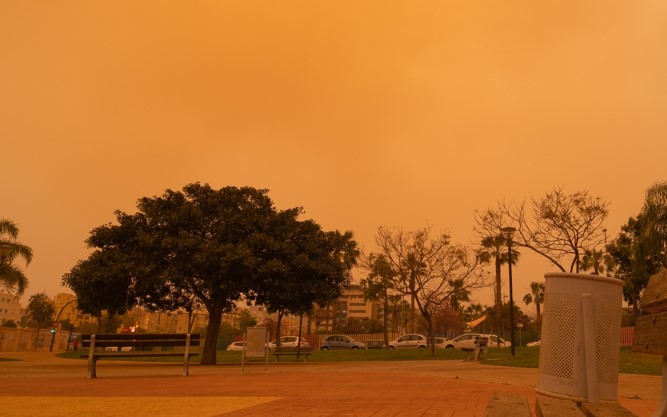

A weather alert has been issued for Spain, with ‘blood rains’ and orange haze a possibility, which can pose a risk to health following prolonged exposure.
This week ending Friday, April 5, weather forecasts have hinted at a possible cloud of Saharan dust across Spain, which looks set to spread across Europe.
By the end of this week, weather predictions have forecast the arrival of a substantial Saharan dust cloud. Beginning its journey in Spain, the dust is expected to travel across Europe, potentially reaching as far north as Norway and Sweden.
Atmospheric phenomenon
Following what has been labelled the wettest Easter this century, a shift in weather patterns has introduced warmer temperatures. Stability in the weather is anticipated to persist throughout the week, with some regions bracing for record highs of up to 30 degrees.
However, Galicia can expect rain, triggered by Storm Olivia. While Olivia is set to move towards the British Isles, sparing much of Spain, it could leave up to 100 litres per square metre in Galicia.
Dust journey across Europe
The unique positioning of this storm and surrounding weather fronts is predicted to transport Saharan dust towards Spain. The dust is scheduled to leave Morocco by Thursday, initially affecting the Canary Islands before hitting the Iberian Peninsula by Friday, April 5.
Andalucia is expected to bear the brunt of this dust dust cloud. With the forecasted arrival of additional weather fronts by Saturday, April 6, conditions are ripe for ‘blood rain’ – a phenomenon where rain adopts a reddish hue due to its mixture with dust particles.
As the weekend unfolds, the warm air mass carrying the dust is anticipated to ascend further across Europe, potentially impacting countries such as France, the United Kingdom, Switzerland, the Netherlands, Belgium, and Germany, and may even reach Denmark, Sweden, and Norway.
Impact on landscape and air quality
Though this episode may present unique visual phenomena across affected countries, such as an orange-coloured haze, concerns over air quality are common. Current predictions suggest that dust levels will remain within World Health Organization air quality standards.
Thank you for taking the time to read this article. Do remember to come back and check The Euro Weekly News website for all your up-to-date local and international news stories and remember, you can also follow us on Facebook and Instagram.